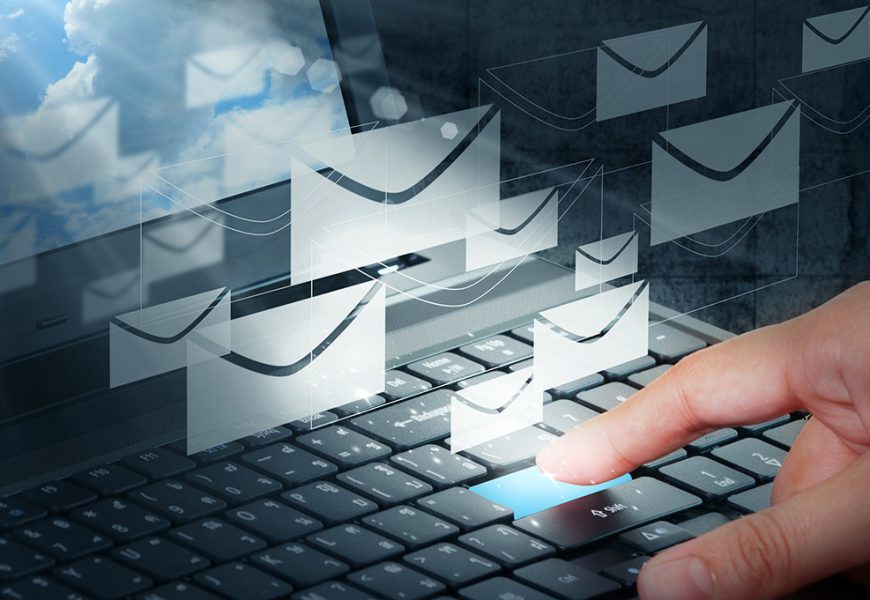Phishing scam emails are one of the most common and dangerous threats in the digital world today. They are designed to deceive individuals into revealing sensitive information, such as login credentials, credit card numbers, or other personal data, often by masquerading as trustworthy entities. With businesses increasingly reliant on digital platforms, the stakes have never been higher. This article will provide insights into what phishing scam emails are, how they work, and practical tips for protecting yourself and your organization from falling victim to these malicious attempts.
What is a Phishing Scam Email?
Phishing scam emails are fraudulent messages designed to trick recipients into divulging sensitive information or downloading malicious software. They often appear to come from reputable sources such as banks, government agencies, or even colleagues. The goal is to exploit trust, convincing recipients to click on malicious links or attachments, leading to data theft or system compromise.
In recent years, phishing attacks have become more sophisticated. Hackers use carefully crafted messages that appear legitimate, making it difficult for even tech-savvy users to distinguish real from fake. The rise in phishing attempts highlights the importance of cybersecurity awareness across all sectors, from individuals to large corporations.
Common Tactics Used in Phishing Scam Emails
Phishing scam emails have evolved to become more targeted and convincing, using various tactics to lure recipients into their traps. Some of the most common strategies include:
- Impersonation of Trusted Brands
Cybercriminals often mimic well-known brands, such as Google, Amazon, or PayPal, to trick recipients into believing the email is authentic. These emails might instruct the recipient to update their account details, verify personal information, or claim an urgent issue needs attention. - Sense of Urgency or Threat
Many phishing emails create a sense of urgency or panic. They might claim that your account has been hacked or suspended and that you must act immediately to resolve the issue. This pressure leads individuals to act quickly without scrutinizing the message for legitimacy. - Spoofed Email Addresses
While phishing emails may appear to come from a legitimate source, a closer look at the email address often reveals that it has been spoofed. Hackers may use addresses that closely resemble legitimate ones, with subtle variations that can easily be overlooked. - Links to Malicious Websites
Phishing emails often contain links that redirect users to fraudulent websites designed to steal their information. These sites often look nearly identical to legitimate ones, further deceiving the victim into entering personal details. - Malicious Attachments
Some phishing scam emails contain attachments that, when opened, download malware or ransomware onto the recipient’s device. These attachments can be disguised as invoices, reports, or other seemingly innocuous files.
The Impact of Phishing on Businesses
Phishing emails can have devastating consequences for businesses. A single employee falling for a phishing scam can lead to data breaches, financial loss, and long-term reputational damage. In fact, according to various cybersecurity reports, phishing is responsible for a significant percentage of all data breaches globally.
For managed it service, the financial fallout from a phishing attack can be particularly severe. The cost of recovering from a data breach, combined with potential legal liabilities and the loss of customer trust, can put a company out of business.
Moreover, phishing attacks are often the entry point for more sophisticated cyberattacks, such as ransomware. Once a phishing email has compromised an employee’s account, hackers can gain access to the organization’s broader network, potentially locking files and demanding large sums of money to restore access.
How to Recognize a Phishing Scam Email
Recognizing phishing scam emails is the first step in protecting yourself and your organization. While phishing tactics may vary, there are several red flags to look out for:
- Poor Grammar and Spelling
While phishing emails have become more polished over the years, many still contain spelling errors or awkward grammar. Legitimate companies take care in their communication, so this can be a key indicator of fraud. - Generic Greetings
Phishing emails often use generic greetings such as “Dear Customer” or “Dear User” instead of your name. Most legitimate companies personalize their emails, addressing you by name. - Suspicious Links or Attachments
Always hover your mouse over a link before clicking it to check its destination. If the URL looks unfamiliar or suspicious, do not click on it. Similarly, be wary of unsolicited attachments, as they may contain malware. - Requests for Personal Information
Legitimate companies will never ask for sensitive information, such as passwords or credit card numbers, via email. If you receive such a request, it’s likely a phishing attempt. - Mismatch Between Display Name and Email Address
Sometimes, the display name on the email may look correct, but the email address behind it may be a clear sign of fraud. Always verify the sender’s email address before taking action on any request.
How to Protect Your Business from Phishing Emails
Businesses can take several steps to safeguard themselves against phishing emails. These include:
- Employee Training
Since phishing emails often target employees, training staff to recognize phishing attempts is crucial. Regular cybersecurity awareness programs can help employees identify suspicious emails and avoid falling victim to scams. - Implementing Multi-Factor Authentication (MFA)
Multi-factor authentication adds an extra layer of security by requiring users to verify their identity through more than just a password. Even if an employee’s credentials are compromised in a phishing attack, MFA can prevent hackers from gaining access to sensitive systems. - Email Filtering Software
Advanced email filtering software can detect and block phishing emails before they reach employees’ inboxes. These filters analyze the content and sender of each email, flagging those that seem suspicious. - Regular Security Audits
Conducting regular security audits helps identify vulnerabilities within your organization. These audits can uncover weaknesses in your systems and processes that could be exploited by phishing attacks. - Encourage Reporting of Suspicious Emails
Encourage a culture of vigilance within your organization. Employees should feel comfortable reporting any suspicious emails they receive, even if they aren’t sure whether they are legitimate. Swift reporting can prevent a phishing attempt from causing further damage.
Case Study: A Phishing Scam Gone Wrong
To understand the real-world impact of phishing scam emails via compro Business, let’s consider a recent case where a mid-sized company fell victim to a targeted phishing attack. The attackers posed as a major software vendor, sending an email to the company’s finance department, requesting the confirmation of a wire transfer. The email contained subtle clues that it was fake, such as a slightly altered email address and some minor grammatical errors.
However, because the message appeared urgent and from a trusted source, the employee complied without verifying the request. The result? The company lost over $150,000 in the fraudulent transfer. This incident highlights how easily phishing attacks can bypass even a well-educated workforce, making cybersecurity training and precautions critical.
Conclusion
Phishing scam emails continue to be one of the most pervasive and damaging forms of cyberattack. As these threats grow more sophisticated, businesses and individuals must remain vigilant and proactive in their cybersecurity measures. By recognizing the signs of phishing attempts, educating employees, and implementing strong security protocols, you can significantly reduce the risk of falling victim to these malicious attacks.
















